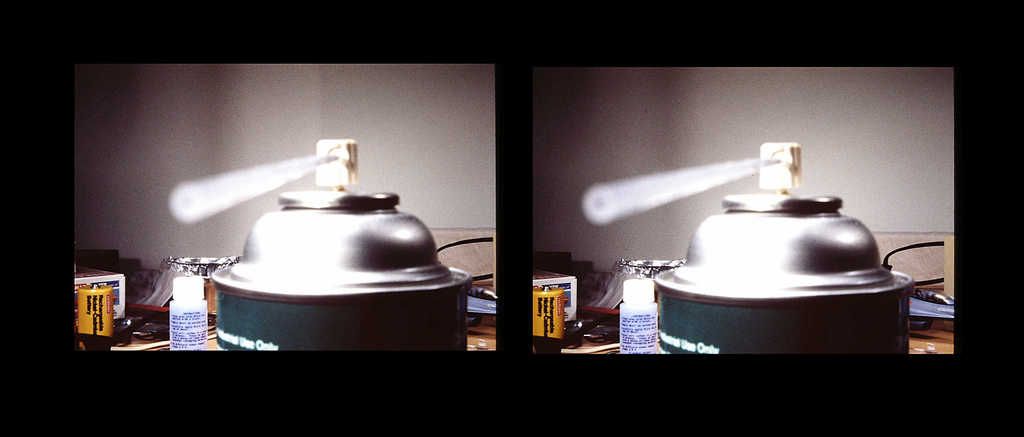Don Stauffer
Stereo photography was really big in the Nineteen Century, lots of sets of stereo travel photography sets sold. At photo shows and fleamarkets one can still find fair numbers of those stereo cards for sale that fit the old stereoscopes.
Don--I had a friend that used that system and the stereo cards looked really--really good.
I went through my 3D slides last night and scanned a few to show. You won't be able to see them in 3D without the correct viewer, but they help illustrate what I tried to do.
Below: I made this stereo pair using the technique that Don was talking about. That is when you capture an image, move the camera over a bit, and capture another.
This was done during my first serious go of scale modeling. The F16 was my first model and I did a so-so job. All the car bodies are my attempts to get high gloss finishes. This was at a time when you could buy SnapTite models for 3 to 4 bucks. It was a real sticker shock when I came back to the hobby a few years back. In this image, 3D was acheived from the image window looking back.

Below: In this image I attempted to have something project towards you. In this case, that being the air can extension wand. When I viewed the stereo pair in my viewer the wand projects deep into the foreground. So, it works. There is still one problem to solve. You can see that the wand is out of focus. That extension wand was about an inch from the lens when I captured the images. That is far too close for my lens to focus on. So, there is the dilemma. How can I get that extreme focus rage and maintain a deep depth of field? Of course, I could move the extension wand farther from the lens, but that directly affects how deep the 3D projects.
This is when I purchased the pinhole lens. I hoped to solve the problem with that. Sadly, I never answered the question because my first attempt was a bust. The film came back black. I had apparently not figured out the correct exposure time using that lens. Just about then, I got sidetracked with having to move. The rest is history.
I would be interested to hear your thoughts about this.
